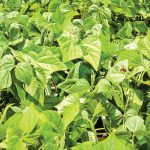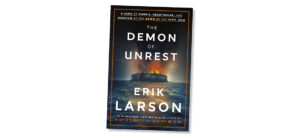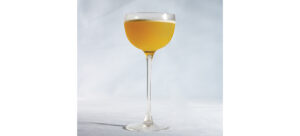
Four by Two
Hanse and Wagner reshape Pinehurst’s No. 4 course
By Lee Pace
The bar was set quite high indeed for this new No. 4 golf course at Pinehurst Country Club when it opened in 1919, commissioned by Pinehurst owner Leonard Tufts and designed by the Scottish architect Donald Ross.
“It is perhaps the best laid-out course of the whole bunch, and when more thoroughly trapped will tax the skill of the wariest golfer,” noted the Pinehurst Outlook in early December 1919.
Later in the month, the newspaper added: “Mr. Ross is warm in his praise of the No. 4 course which is now a complete eighteen hole affair, and he states that he considers it will be the best golfing proposition of all when it has been fully trapped and the fairgreens developed.”
Best golfing proposition? Lofty praise indeed, though admittedly coming well before the No. 2 course was expanded, revised, remodeled and amped up in the mid-1930s when the prideful Ross was irked of hearing about some upstart course in Augusta, Georgia.
The No. 4 course followed the opening of No. 1 in 1899, No. 2 in 1907 and No. 3 in 1911. From the main clubhouse, No. 3 was set essentially to the west, across Hwy. 5, No. 1 to the south, No. 2 to the east, and No. 4 was tucked to the southeast between No. 2 and 1, much as it is today. Maps indicate that in the very early days of No. 2, three holes peeled off from what is now the 10th green and ran into an area that would later comprise No. 4, then rejoined the current routing at the 11th hole. The large 5-acre lake that has been the primary visual feature was originally much smaller.
No. 2 evolved into its status as one golf’s grandest venues when Ross arrived at its current routing in 1935 and replaced the sand/clay greens with Bermuda grass, and it was deemed at nearly 7,000 yards to be one of the strongest, most severe tests for the elite golfer. It has remained so over nearly a century and in the last two-plus decades has hosted three U.S. Opens and a U.S. Women’s Open.
But being the last to arrive, No. 4 was the first to stumble when difficult economic times arrived in the 1930s, the first domino falling in what would become a checkered existence.
The Tufts family closed nine holes of the course in 1936 and shut down the remaining nine in 1939. Then, when better times arrived after World War II, Richard Tufts, Leonard’s son who had now ascended to the presidency of Pinehurst Inc., tweaked nine of the original holes and they were opened back in 1950. A complete 18-hole course followed three years later.
When the Diamondhead Corporation, Pinehurst’s new owners, enticed the PGA Tour to hold a 144-hole event at the club in 1973, a second course was needed as a venue along with No. 2, and Robert Trent Jones, who had become a Moore County landowner with a parcel bordering Pinehurst Country Club and the Country Club of North Carolina, was retained to lengthen and strengthen the course for the professionals. Then a decade later, son Rees Jones authored yet another renovation — the crux of the project the rebuilding of all the greens to be more receptive to the longer tee shots his dad had integrated years before.
“No. 4 had become a hybrid of designers and ideas with no thread to tie it all together,” Pat Corso, Pinehurst’s president and CEO from 1987-2004, said in 1998.
As he spoke, Tom Fazio and his team were busy at work rebuilding and shaping the course toward yet another iteration. The new No. 4 that opened in December 1999 was routed through essentially the same corridors as the earlier course, but holes were rearranged and Fazio integrated a British flavor of a myriad of pot bunkers as a nod of the cap to Ross, the Scottish designer.
The course also embraced the design flavor of the era: It was green, and it had smooth, soft edges, and there were flower beds in several nooks and crannies, most notably the slopes around the green of the par-3 fourth hole.
All of that was fine until 2011, when No. 2 next door was given a new set of bones and coat of paint courtesy of the design team of Bill Coore and Ben Crenshaw. The Deuce had also become sleek and glossy in the golf world’s creep toward the standards set by Augusta National. Don Padgett II, the Pinehurst president and COO at the time, slammed on the brakes and charged Coore and Crenshaw to return the club’s pride and joy to its sandy, linksy, disheveled self that Ross had molded with his native Scotland in mind.
The more No. 2 has succeeded over a half dozen years from contexts of visuals, playability, maintenance and fidelity toward Pinehurst’s past, the more No. 4 paled by comparison. Thus the decision in 2016 by Pinehurst owner Robert Dedman Jr. and Tom Pashley, who succeeded Padgett in 2014, to hire Gil Hanse and partner Jim Wagner to rebuild No. 4. The course closed in October 2017 and Hanse set about his face-lift, his sleeping quarters over the winter being the Ross Cottage by the third hole of No. 2. The new course was sodded and sprigged by early June, and this month is growing in toward a September reopening.
“It all started with Coore and Crenshaw,” Hanse says. “They were brought in to bring back the character and to restore the sandy waste areas and Ross’ vision for what Carolina Sandhills golf looks like. We’ve carried that a little further in this presentation. It’s not a tribute course to Ross or course No. 2. But we feel it will be a good companion golf course.”
The corridors from the old course were used but several shifts in holes were made. Two of the par-3s have been altered substantially. The green on the fourth hole has been moved from well below the tee and beside the lake to a higher elevation farther to the left, with a sharp slope now cascading to the right toward the water. The sixth green was elevated and substantial sandscaping integrated around it. The old 12th hole was abandoned in favor of a new par-3 built into the woods, sitting in a triangle between the previous seventh, 10th and 11th holes.
“The characteristic about No. 4 that is most special is the land. It has some of the most dramatic contours on the entire site,” Hanse says. “On No. 2, holes four and five and 13 and 14 are the most dramatic in terms of topography. I think we’ve eight or nine that have that element. That gives us the opportunity to create very dramatic landscaping and more picturesque landscaping. The new course has something of the look and feel of No. 2 and returns a more natural connection to the landscape.”
Another interesting twist is creating a massive waste area on the par-5 ninth hole similar to the “Hell’s Half Acre” at Pine Valley. Golfers will traverse a sandy area dotted with wiregrass, broom sedge and other wild growth for some 80 yards on their second shot.
The designers and their construction company transplanted thousands of wiregrass plants from the site of the abandoned Pit Golf Links on N.C. 5 near Aberdeen and also moved “chunks” of dirt, sand and vegetation from the site as well. They scooped out sections of ground roughly 2-feet wide by 4-feet long, moved them intact to the No. 4 course and placed them around bunkers. Then a shaper followed and tucked them into the surface, the result hopefully looking like ground that has aged and weathered for years.
Just like No. 2 looked after Coore and Crenshaw took aim in 2010-11.
Just like Mid Pines, another Ross relic from the 1920s, looked after Kyle Franz restored it in 2013.
“What Jim and I focused on was creating something that is going to look and feel and be sort of philosophically in line with the playable characteristics that Ross embraced at Pinehurst,” Hanse says. “The golf course will capture more of that look, that look that Kyle Franz did at Mid Pines. There is an excitement around Pinehurst about recapturing that ‘Pinehurst look.’”
Noting that at Pinehurst “our history is our road map to the future,” Pashley adds that a halfway house will be built alongside the fifth hole of No. 4 and will also serve golfers coming off the 10th green of No. 2 nearby. The architectural model will be the original Pinehurst clubhouse from 1900 — two stories with an observation deck. Coming full circle seems to be an enduring theme at Pinehurst. PS
Author Lee Pace wrote extensively of the Coore and Crenshaw restoration of Pinehurst No. 2 in his 2012 book, The Golden Age of Pinehurst — The Rebirth of No. 2.





